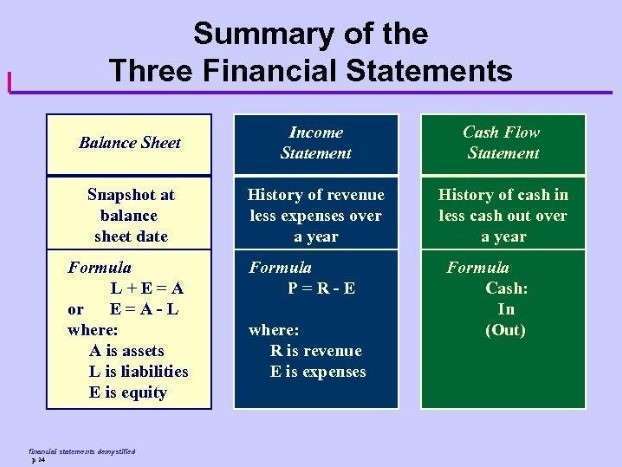Where profits may indicate that a company has positive net income, retained earnings may show that a company has a net loss depending on the amount of dividends it paid out to shareholders. Retained earnings can typically be found on a company’s balance sheet in the shareholders’ equity section. Retained earnings are calculated through taking the beginning-period retained earnings, adding to the net income (or loss), and subtracting dividend payouts. Negative retained earnings may also hinder a company’s ability to secure financing or negotiate favorable credit terms.

Retained Earnings in Accounting and What They Can Tell You
Companies with deficits may struggle to secure additional capital or credit, increasing the likelihood of equity financing and share dilution. Higher perceived credit risks can also raise borrowing costs, further complicating growth initiatives. Creditors and lenders may also reassess their relationship with a business displaying negative retained earnings. They might perceive the company as a higher credit risk, which could lead to more stringent borrowing terms or a reluctance to extend further credit. This can hamper the company’s ability to finance operations or invest in growth opportunities, potentially leading to a downward spiral of financial health. The potential implications of a negative retained earnings balance depend on the severity and duration of the losses.
Seek Additional Funding or Investment
However, it may face challenges in terms of obtaining funding and may need to make changes to improve its financial performance. The company may also need to reevaluate its business strategy and make adjustments to become profitable. A crucial aspect to consider is the impact of a challenging economic environment on Company A’s operations. It is essential for Company A to address these issues promptly to stabilize its financial health. Issuing new shares can be a strategic move to improve negative retained earnings by injecting fresh capital into the company, strengthening investments and enhancing shareholder equity.
- Negative retained earnings are not considered debt in the traditional sense, as they do not represent an obligation that a company owes to a creditor.
- It may be tempting to keep things simple with a final profit or loss amount, but each line item helps you understand how and why your business is making or losing money.
- Negative retained earnings occur when a company has accumulated net losses over time, and these losses have exceeded the amount of net income earned by the company.
- Since a company with negative retained profits does not have any profits available, it would not have the financial capacity to distribute dividends to its shareholders.
Why would a company have negative retained earnings?
Investors should evaluate management’s plans for addressing the deficit, such as cost-cutting measures, strategic investments, or restructuring efforts. Forward-looking indicators like projected revenue growth and market expansion opportunities help assess whether the company is positioned for recovery. Understanding industry dynamics and competition is equally important, as these factors influence profitability. While returning profits to shareholders is common, doing so without sufficient earnings can erode retained earnings.

- Companies can enhance their negative retained earnings by implementing strategies such as boosting profits, cutting dividend payments, reducing costs, and making strategic investments.
- However, its auditors also force it to write off $250,000 of unsold shoes, which results in a negative retained earnings balance of -$50,000.
- This approach allows organizations to effectively lower costs and identify areas where expenditures can be trimmed without sacrificing quality or productivity.
- Another way to recover from negative retained earnings is to increase revenue by finding new customers or selling more to existing customers.
- Continuous net losses can signal to investors and stakeholders that the company is not generating enough revenue to cover its expenses and is operating at a loss.
Negative retained earnings can arise for a profitable company if it distributes dividends that are, in aggregate, greater than the total amount of its earnings since the foundation of the company. Retained earnings are the portion of income that a business keeps for internal operations rather than paying out to shareholders as dividends. Reducing dividend payments can help companies improve negative retained earnings by retaining more earnings for reinvestment, thereby enhancing shareholder value and financial stability. When a company experiences negative retained earnings, it signals to investors that the company may be struggling to generate sustainable profits and is potentially overspending. This can erode QuickBooks the confidence of existing shareholders and deter potential new investors.

And if the entity is operating in some industry like the insurance industry, the entity might spend some more time than others to break even and make profits. So I was thinking there might be an accounting entry of some sort that I am missing that would result in the retained earnings reflecting $0. To illustrate the negative retained earnings concept of negative retained earnings, let’s examine real-life scenarios from Company A and Company B that faced challenges leading to the accumulation of negative retained earnings. By analyzing various revenue streams and identifying opportunities for diversification, companies can broaden their income sources. A maturing company may not have many options or high-return projects for which to use the surplus cash, and it may prefer handing out dividends.
Axsome (AXSM) Ends Patent Dispute, Stock Surges On Positive News
- It can indicate financial distress, reduced borrowing capacity, and a lower level of investor confidence in the company.
- In the long term, negative retained earnings may indicate that a company is not financially viable and may lead to its eventual failure.
- This account is used to records entity net income cumulatively from the starting operation until the end of the reporting date.
- By cutting unnecessary expenses, a company can free up cash flow and gradually move towards a positive retained earnings balance.
Companies can enhance their negative retained earnings by implementing strategies such as boosting profits, cutting dividend payments, reducing costs, and making strategic investments. This can be concerning for investors as it suggests Coffee Shop Accounting that the company has accumulated losses over time, which can erode the value of their ownership stake. In turn, this can lead to a decrease in the company’s market value and impact its ability to attract new investors or raise capital. The company’s ability to raise capital through debt or equity financing may be compromised as lenders and investors may view the company as a higher risk. This unfavorable financial position can also affect the company’s credit rating, making it more expensive to raise funds in the future. This can have significant consequences on a company’s financial health and future growth prospects.

